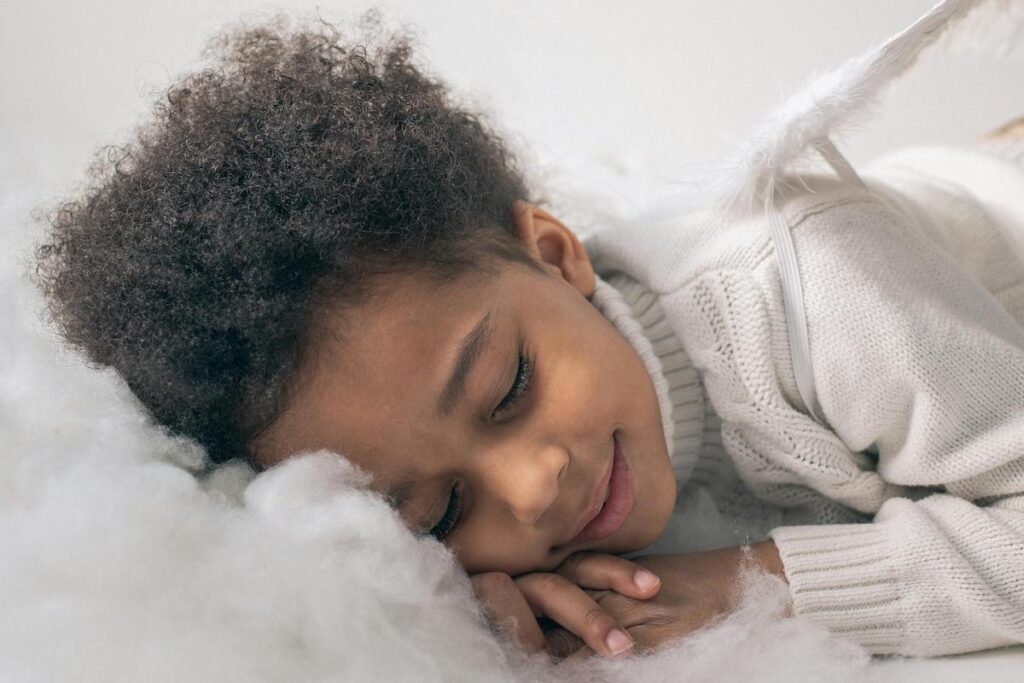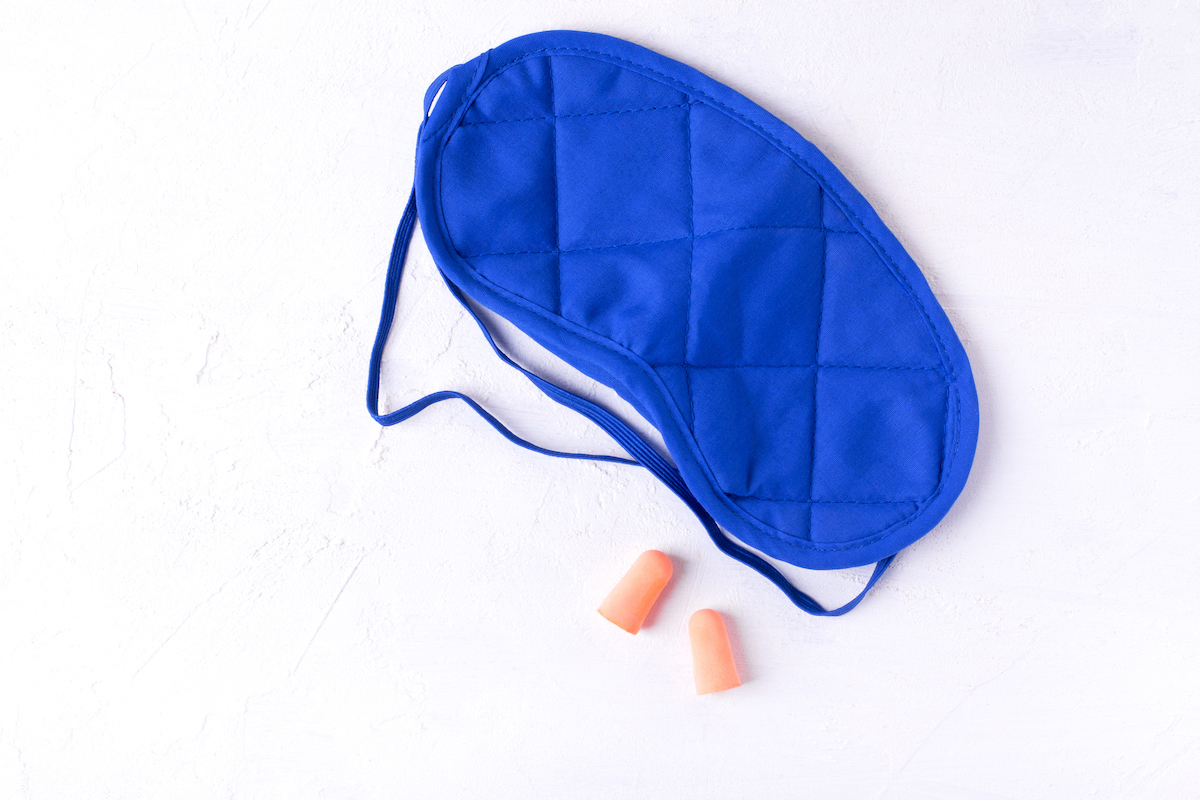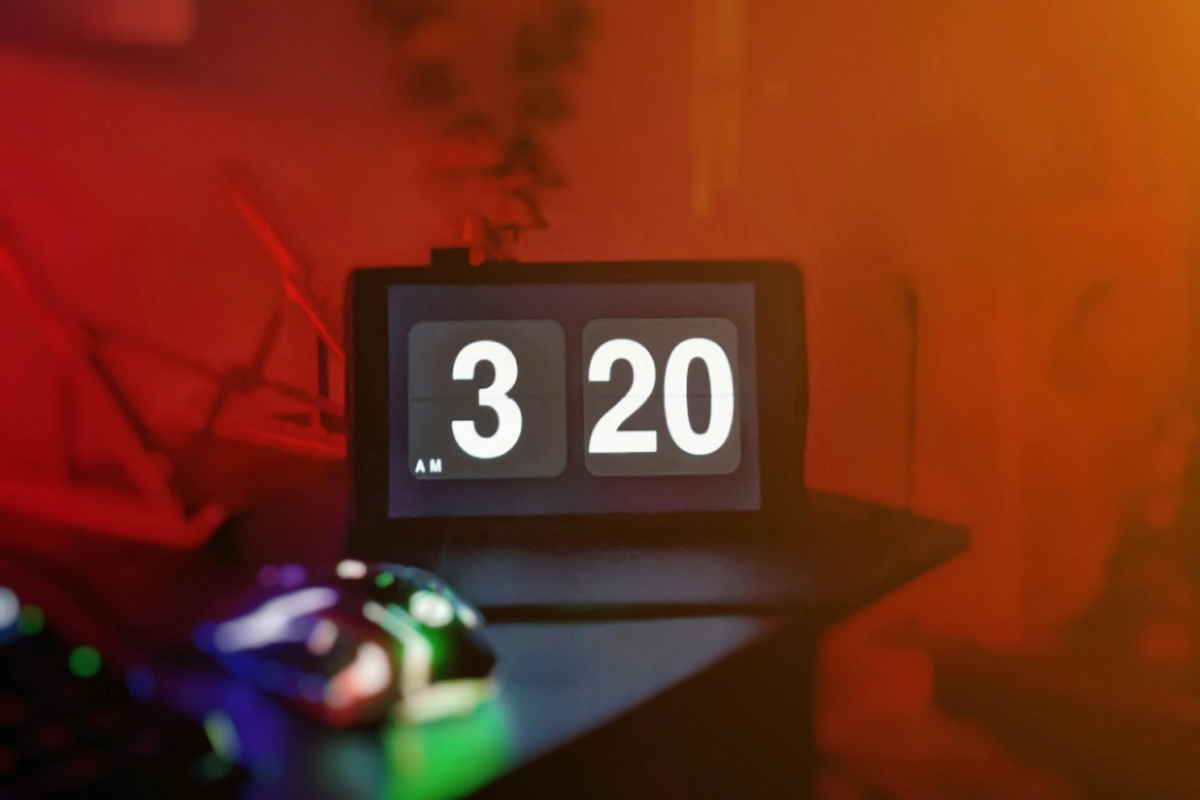This is the first part in a series that shares results of a survey we did on your kids’ sleep habits. Read part two on naps here.
Sleep. It’s something we generally don’t think much about before we have kids. We go to sleep, we wake up. Sometimes we wish we got more. But once kids arrive, sleep becomes vastly more complicated and, often, out of reach.
There are a million questions to ask of the data about sleep. Sleep training. Co-sleeping. Night terrors. Whether you can actually die from exhaustion. Most of these have some data behind them, and usually we are engaging with a specific question.
Overlying this whole discussion, though, is the big question of what to even expect in terms of a typical pattern of sleep. At what time do most people put their kids to bed? How many times do the kids wake up? What’s a standard number of naps by age? These aren’t specific questions, but sometimes seeing something about the experience of others — the average and the range — can give us context for our own experience, both now and in the future.
To try to answer this question, I created a survey and sent it to all of you. The data was so fun to analyze that it’s too much for just one article. Today is part one of a two-part series. This week: nighttime sleep. Next Monday: naps.
Some caveats before we get started. This isn’t a randomized survey but a survey of a specific audience. I didn’t collect information about demographics or other household circumstances, which I would have done if this were an academic paper. There are clear limitations to this sampling approach; for example, the parents answering may be paying more attention to sleep than others. Moreover, this data is descriptive — and, in my view, interesting — but we’re not looking for causal relationships.
A final caveat: I have heard from some of you when we’ve done other versions of this (like the data on sex after kids) that seeing other people’s experiences sometimes makes you feel worse rather than better. If that seems like you, maybe skip this one.

Details of data collection
The data discussed below were sourced in two ways. First, from the ParentData audience — we put links in this newsletter and on Twitter and Instagram. Second, from users of the Nanit sleep monitor system (Nanit sent the survey out to its user base). Both audiences skew higher-education and higher-income than the average, and mostly have younger children.
The final sample is 14,919 children. Some basic demographics:
- The median age was 22 months, with 99% of the data being for children under 10 years old.
- 51.5% of parents reported male children, 48.3% reported female children, and 0.3% declined to identify their child’s sex.
- About half of the children were the only one in their family (at least so far), with another 40% being one of two children.
In a lot of the discussion below, I’m going to divide the sample into age-based groups: 0 to 3 months, 4-6 months, 7-9 months, 10-12 months, 13-18 months, 19-24 months, 2 to 3 years, 3 to 4 years, 4 to 5 years, and 5 to 10 years (I’ll drop kids over 10). It’s always tricky to think about this kind of division, since there is no reason to believe anything systematically changes at 18 or 24 months, but this will help us do some better visualization.
With this background, let’s get into the big nighttime sleep questions: Where do kids sleep? What does bedtime look like? What does the overnight look like? What is the morning situation?
Where do kids sleep?
The graph below shows sleeping location by age. The patterns here are pretty clear. For the first three months, most kids are in their own sleeping location in a parent’s room. Over the first year, this switches toward their own room. As kids age, sharing a room with a sibling becomes more common. Interestingly, the share of kids sleeping in a parent’s bed is extremely consistent over time, around 4% to 5%, starting to dip only as kids get to be over 5.
What does bedtime look like?
I asked this in a couple of ways. First, I asked people when their child was “in bed for bedtime.” I then also asked when they were asleep. My kid is in bed at 8:30 p.m. (for example) but doesn’t usually fall asleep until 9. Both of these seem relevant to me — there is the aspirational bedtime, and there is the reality of sleep time. In a world with perfect sleep hygiene, you want 15 or 20 minutes between bedtime and sleep time. Are we getting that? Let’s see.
Let’s start with the “in-bed bedtime.” The graphs below show the distribution of “in bed” time by age. These graphs are what we call cumulative distribution functions — stay with me — and they illustrate the share of kids who are in bed (that’s the vertical axis) by time (that’s the horizontal axis).
In the first graph, we have just the age groups under one year. To see how to read this, look at the marked dot on the youngest age group line at 8:30 p.m. — if you go over to the y-axis, this is at 40%. That means 40% of kids in this age group are in bed at or before 8:30. All of the lines eventually hit 100% — all kids are in bed at some time (thank goodness).
In this first graph, we see a clear pattern. Babies under 3 months have both way more variation and on average later bedtimes. As we move through 4 to 6 months and then to the second half of the year, bedtimes consolidate and are earlier. By 12 months, more than half of kids are in bed by 7:30 and 90% by 8:30.
The second graph below looks at the evolution of bedtime after the age of 1; we see bedtimes very gradually moving later as kids age. Still, I will note that well over 90% of kids in these data are in bed by 9 p.m. even at age 10.
In these data, I also asked about “sleep” time — distinguishing between when kids are in bed and when they are asleep (sometimes called “sleep latency”). The average sleep latency in this group is close to what you’d hope for, and very similar across ages. For the most part, kids are falling asleep 10 to 20 minutes after bedtime. The kids in the data who are older than 5 take a little longer — more like 20 minutes on average rather than 10.
But overall, this is good sleep hygiene! It suggests to me that most respondents are choosing bedtime based on anticipated sleep time.
The overnight hours
What do things look like overnight?
Here’s a look at the average number of wake-ups by age group, with error bars showing the range from the 10th percentile to the 90th. You can see the clear move toward fewer wake-ups as kids age. This drop is very fast in the first six months — it drops a lot even within the first 3 months. Parents report an average of 3.9 night wake-ups in month 1, dropping to 1.9 in month 3.
Another way to look at this is the share of kids with no wake-ups at all overnight — the graph below. Very few kids sleep through the night between 0 and 3 months (well under 10%). This increases over the first year, with a bit over half of kids in the 9-to-12-month range sleeping without a nighttime wake-up.
The older kids in this graph are interesting. About 75% of kids are sleeping through the night without waking up by the second half of their first year. That number stays remarkably similar through the oldest age group, even dipping a bit in the 3-to-5-year age range (this may just be statistical noise).
Both of these graphs show a similar thing — namely, a stagnation in sleep quality, and maybe even a reversal, as kids age past 2.
I think this reflects a big part of the struggles I hear from parents in this audience. There is a lot of guidance about how to improve sleep in that first year. But many kids either never end up fully sleeping through the night in this first year or backslide as they get older. This is often unexpected, and the guidance is much more limited. I’ve discussed this a few times, and this podcast episode may also be useful if you are in this boat.
Wake times
In contrast to bedtimes, wake times are extremely consistent. In pretty much every age group, 80% of kids are waking up between 5:45 and 7 a.m. Small babies’ wake-ups are a little bit later, but not much. It’s more consolidated than bedtime, probably because our wake-ups drive theirs. It’s hard for your kid to sleep until 9 a.m. when you’ve got to leave for work by 8.
Most of the variation in how much kids sleep is, therefore, driven by when they go to bed, not when they wake up.
Big picture
What do we take from this data, other than that I got a little graph-happy with it? I’d draw a few conclusions.
First (and I couldn’t resist one more graph below): Total night sleep time does not vary as much by age as we might think! Little kids sleep more overall (we’ll see that in the next post, on naps), but the average amount of sleep at night is pretty consistent at 10 to 11 hours. Kids 5 to 10 years old are getting only about 45 minutes less sleep at night than their much younger siblings.
Second: This small decline in total sleep is almost all being driven by small changes in bedtime as kids age, not in changes in their wake-up time. This is important because it tells us that bedtime is where you should consider adjusting if you want your kid to get more sleep.
Third: Overnight wake-ups lessen over the first year, but the improvement seems to stagnate. I do think this says that if your child is still waking up and that’s an issue for you, it may be a good idea to consider how you can intervene. They will eventually stop doing it, but it may go on much longer than you expect.
Fourth, and finally: The first three months, all bets are off. They are staying up late like a teenager, waking up all the time overnight, sleeping a bit later in the morning. Hang in there! It gets way more predictable even a few months later.
That’s it for today! Stay tuned for naps next week.
How is sleeping going right now in your house? Do you have any sleep advice for other parents that’s worked for you? Join the conversation in the comments.
Community Guidelines
















Log in
I think its interesting that the baby sleep industry/sleep consultants constantly sell you on things like 12h overnights + chunky naps, but the reality is most babies just do not sleep that long. It results in parents (with the help of these pricey consultants) devising unrealistic schedules and feeling incredibly discouraged when their kids don’t take to it.
“Most of the variation in how much kids sleep is, therefore, driven by when they go to bed, not when they wake up.”
I have heard this before and it seems logical based on other data, but I’m not sure it’s true and certainly doesn’t necessarily follow from this data.
My 3-year-old does not need very much sleep. She is in bed asleep between 8:45 and 9, and wakes around 6:30. We can put her to bed at 8… then she wakes at 5:30. We would much rather put her to bed with the other kids and wake at 6:30 with her before her 5 and 8 year old siblings wake at 7-7:30, than be up at 5:30! So in our case, her sleep duration is driving her bedtime.
Same for us! Even though our sleep consultant has us bringing up bedtime when daytime sleep is less than ideal, saying that “he’ll still wake up at the same time” we’ve observed that he pretty much always sleeps 11 hours. So put him to bed at 6pm? He’ll wake up at 5am. With a 7pm bedtime, he’ll make it until 6am. The complicating factor for us is poor daycare sleep which almost always results in early bedtime and early wake ups. 🤷♀️
Would LOVE to know more about the sleep latency data. That’s been our biggest sleep struggle by far for our 2.5 year old and has been for a year. It’s become 45-60 minutes from in-bed to asleep, despite a super consistent bedtime routine and different timing. (Though oddly not at naps – just bedtime!)
Slightly devastated to learn that the amount of sleep kids get is nearly all being driven by bedtime rather than wake up time. My almost-3yo wakes up between 5 and 5:30 no matter what we do and I just really want to sleep in again someday!
I would also be curious to be reminded of how “sleeping thru the night” was defined for the survey. Does “we’re not looking for causal relationships” mean you won’t be posting graphs comparing the different variables and the quality / quantity of sleep (ex earlier vs later bedtimes for 10-12mo and # of wake ups or total hours of over night sleep)? Asking for me obviously lol.
I’d love to know why sleep consultants often insist that kids should be sleeping 12 hours a night especially given that these data show that most kids only sleep between 10 and 11 hours. My son (who is now 2.5) was has always slept 10 to 11 hours and I spent way too much time when he under 1 trying to figure out how to get him to sleep longer at night.
Totally agree. Even our pediatrician insisted I get my daughter to sleep an extra hour at night to hit that magical 14-hours-per-day, and she never ever slept that much. She was a ten-hour night kid from the get-go.
I’m curious about any correlation between *where* babies and toddlers sleep, and the number of wake-ups per night they have (by specific age group.) To be honest, I have a prejudice in my mind that kiddos wake up more when they co-sleep and sleep more hours in a row earlier when they’re in their own room, but I’d like to see if the data supports that bias I hold.
that would be interesting to see! I will say that for my son (who is 2.5 now). He doesn’t have any wake ups if we co-sleep with him, but he has one if we don’t. So at least for us we have better success if we sleep with him!
This has been our experience as well with our 2 yr old.
After my son turned 1, we had several months of waking up (for the day!) between 4:30 and 5:30 am. I tried shifting bedtime earlier, then later. Nothing worked until I started a bedtime snack (high in protein or fiber). Ever since I started the bedtime snack, he has slept until 6 (when I have to wake him up during the week) or even close to 7 on the weekends. Turns out he was just getting hungry!
This is so interesting. My son is 14 months and it doesn’t matter if we put him to bed at 6:30 or 7:30, he will wake up at 5:30. What time does your son typically go to bed? What kind of a bedtime snack do you give him? Our son drinks milk before bed but maybe that’s not enough to keep him asleep until 6 or 7.
Can you remind me – did you put parameters around what “sleeping through the night” means? It seems like a lot of places define that as one 7-9 hour stretch for the kid, even if they are still getting up to do a feeding and then go back to bed after that first long stretch.
I’d bet the dip in the wakeups graph is not statistical noise. Our 3 year old who slept though the night starting at 4 months will now regularly wake up once a night and come into our room just to be put back to bed. I realize it’s anecdotal but that chart matches our experience!
It’d be interesting to see an overlay of age when the transition from crib to big kid bed takes place, since anecdotally that seems to be a major sleep disruption in 2-4 yr olds
Complete agree. Once our kid could get out of bed our silence through the night stopped a few times a week (usually for nonsense. “I need water!” (takes one tiny sip) “I need to pee!” (pees like four drops) “Fix my blanket!” (is capable of this) etc.
It matches my experience, too. Getting out of the crib has wreaked havoc on my four year old’s sleep.
Yes! I concur. The first couple nights after my kid learned how to open the door to her bedroom, her sleeping through the night stopped and even bedtime became a nightmare. Two days in, I bought a thing for the knob so she can’t open it, and her sleep went back to normal
Ooo, can you share what you used? We’re currently experiencing this with our 3.5yo. It was like she didn’t realize he could even get out of her (toddler) bed on her own until we went to Disney a few weeks ago. Her schedule got all messed up and now that she knows she can stay up past 8, etc. she’s like a jack-in-the-box in and out of the room before finally settling in at night.
Also, related question: did you feel/how did you overcome any guilt about essentially locking her in? That’s one main reason we’ve been holding off on something like that.
Same! My two older kids had more sleep disruptions from ages 3-4 than 1-2. It seemed to be mostly driven by bad dreams, so my theory is that this is an age of increasing awareness coupled with minimal skill at differentiating between reality and fiction, which leads to a lot of fears. This can then turn into habit — waking up and coming to get us every night. We’ve had a lot of success with a combination of explaining the importance of going back to sleep when you can (you don’t even remember) and having a reward system for sleeping through the night. We tell them that of course they can come get us if they are scared, but everyone sleeps better when they can put themselves back to sleep. They each usually have 1-2 wake ups per month, which feels reasonable to me.
Thank you for this! So interesting to see where my inputs landed in the data! We did 12 Hours by 12 Weeks for all three kids – only other parenting book I read (other than Expecting Better and Cribsheet!). Just finishing up sleep training with my 3rd and he’s sleeping a solid 10-12 hours at 10 weeks old. It’s been my saving grace with parenting – I may be failing at everything else but the kids are all luckily great sleepers!